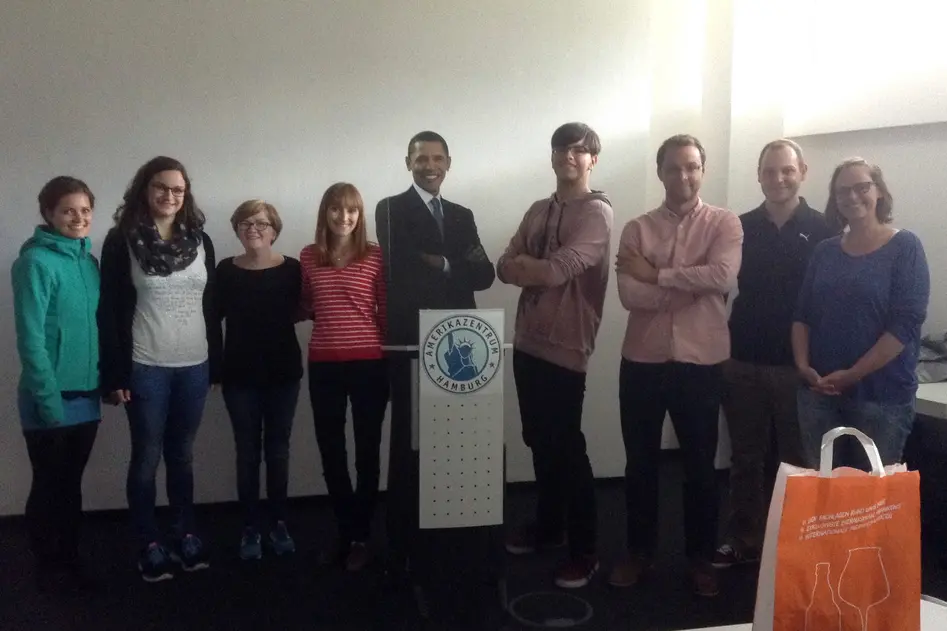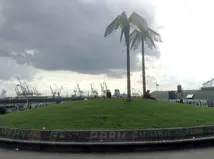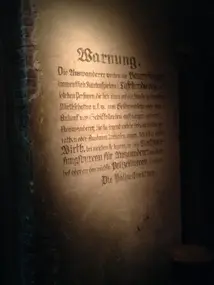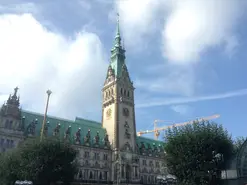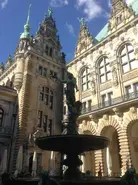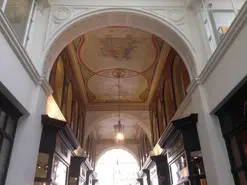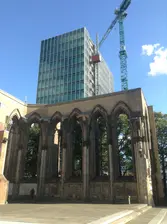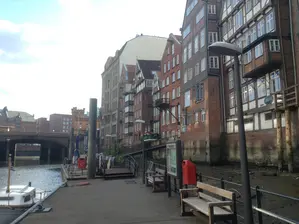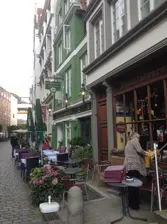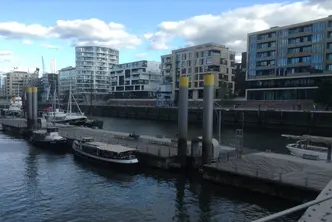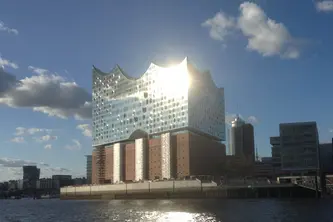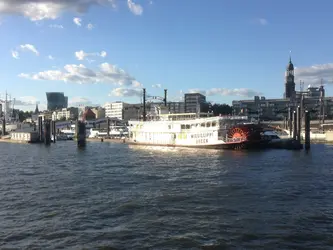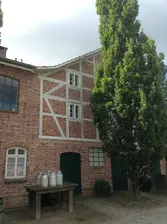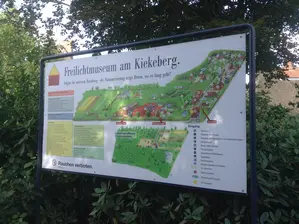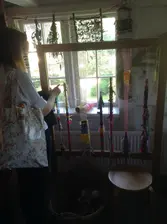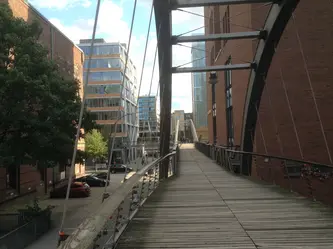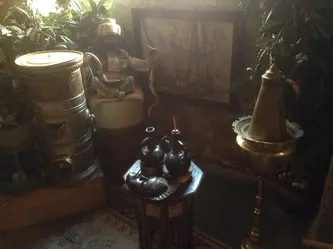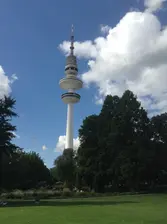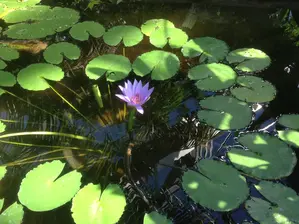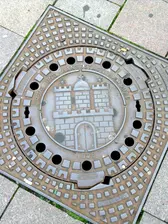Going North: Hamburg and Bremerhaven as Gateways into the New World
Pictures and editing by Nicole K. Konopka
From September 7–10, 2015, participants of the class "Jetzt ist die Zeit und Stunde da, wir reisen nach Amerika!German Immigrants in North American and Canadian Literature and Culture" went together with their lecturer Dr. Konopka on a field trip to the North of Germany. After the trip, the student participants were asked to describe their days in and around beautiful H-A-M-B-U-R-G…
H like "Here we come!" (Anika Hübner)
Our journey began in the early hours of Monday, 7th September 2015. With excitement, anticipation, and a feeling of uncertainty as to what lay ahead of us, we assembled at the train station in Bamberg with two towns on the shores of the North Sea as our destinations: Hamburg and Bremerhaven – gateways to the New World!
In the seminar we studied what it means to leave one's home country behind and start the weary way to North America by foot, train, and ship. Novels, old newspaper articles, and movies gave us an impression of what life in both the New and Old world was like and what struggles the immigrants had to face. We also investigated the letters that crossed the ocean – deeply personal and detailed correspondence between the settlers in the new country and the families and friends they left behind. Ultimately, it was fascinating to find out that German immigrants temporarily outnumbered all other ethnic groups of immigrants.
In comparison to the travels we read about in class our own journey was swift and trouble-free. Transportation clearly has improved since the first people decided to go to North to board a steam boat to America! When we arrived in Hamburg, we did not have to squeeze into a waiting hall in Ballin Stadt, where people waited until they could purchase a ticket to the New World. Instead, we rested briefly in our hostel before we then set off to explore Hamburg's and Bremerhaven's migrant past and present.
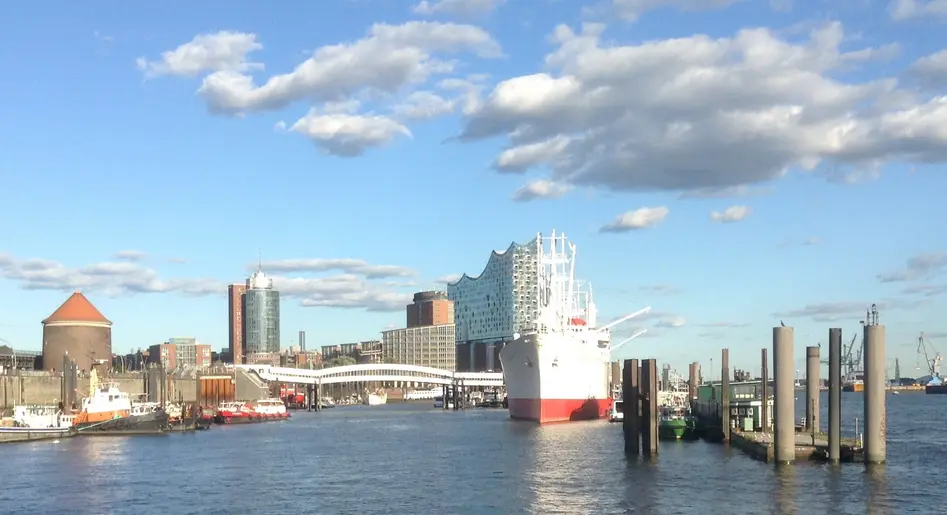
A like "All Aboard!" (Henriette Seeliger)
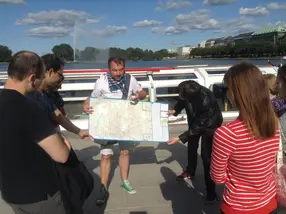
"All aboard!" – Following this famous seafarers' call, seven students and their lecturer began a sightseeing tour shortly after arriving in Hamburg in brilliant and unexpected sunshine. We met our tour guide Volker at the famous Jungfernstieg, where he introduced us to a wild selection of stories about his hometown. He gave us an insight into the city's history, showing us landmarks and telling us about some of Hamburg's most illustrious and influential citizens, such as Udo Lindenberg, permanent resident in the famous Hotel Atlantic, and Albert Ballin, the general director of the transportation company HAPAG Lloyd, who commissioned mass accommodations for transatlantic emigrants that are now the museum Ballin Stadt.
In front of the city's beautiful Rathaus we were amazed to learn that this is the only town hall in Germany where you are not allowed to demonstrate in sight of the building. Moving back and forth in time and between the different parts of the inner city, we got an idea of Hamburg's many contrasting sides: there is the famous Speicherstadt, built in the late nineteenth century, and then, right next to it, there is the Hafen City, were we were awestruck by the sight of the (in)famous and yet to be completed Opera House. On our way we also passed St. Nikolai, a church that was destroyed during the Second World War and now provides one of the most beautiful views of the city – if you are brave enough to take the glass elevator that brings you to a platform 76 meters above the ground, that is.
After a couple of hours we were then suitably equipped with an extensive overview of Hamburg's histories past and present and concluded our walk with another challenge to those of us who are afraid of heights. We descended 24 meters below the river Elbe to take a look at a retired tunnel near the Landungsbrücken, before we bid farewell to Volker and headed for the ferry.
M like "Matjes and Margaritas!" (Marc Malischke)
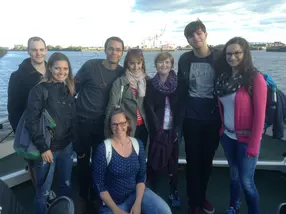
After the guided tour through Hamburg's port district, our group took the first opportunity to try the most famous local food: Fischbrötchen. Did those who left for America also give it a try? With questions like these in mind we hopped on one of the public transport ferries, taking us down the River Elbe on a roundtrip to Hamburg's (in)famous St. Pauli district. During our ferry ride, we passed an imitation of a Mississippi steam boat, but to our great disappointment the paddle wheel was only for show. Nonetheless, it was very impressive and a curious reference to the land of destination of our immigrants.
Disembarking the ferry in St. Pauli, we walked through the former roper's quarter, which eventually became the world famous red light district Reeperbahn Boulevard. The area was once dominated by workshops and manufacturing, and was the place were stevedores and sailors spent the poor wages they earned from transporting hundreds of thousands to the Americas in the local bars and brothels.
Today's 'sailors' are tourists from all over the world, roaming in masses through the streets that promise entertainment. For most in the group the famed flair of St. Pauli turned out to be a strange mixture of bleakness, bright advertisement, disenchantment, and something interesting to see at every other corner. After a leisurely stroll up and down the boulevard, with stops at the famous bar Zur Ritze and the alley Zur großen Freiheit, we followed the example of the sailor of olden days and raised our glass to a safe arrival in Hamburg's harbor!
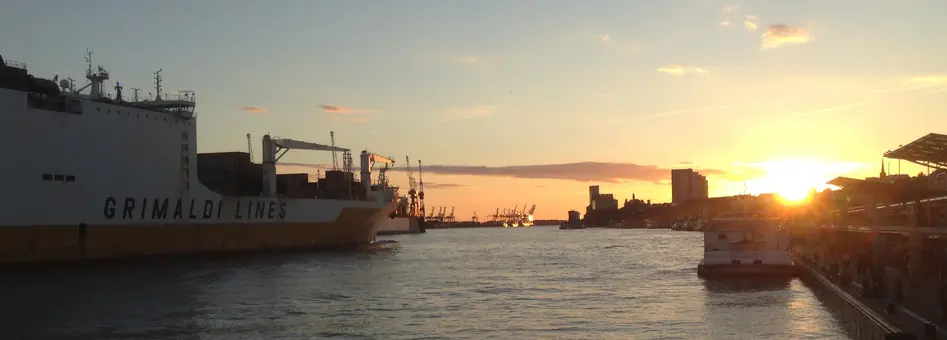
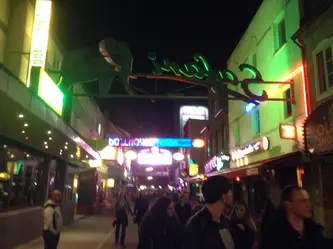
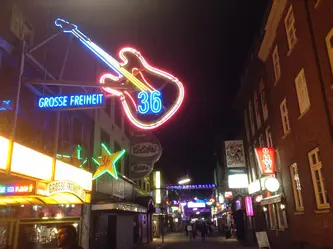
B like "Back in Time!" (Jana Rädlein)
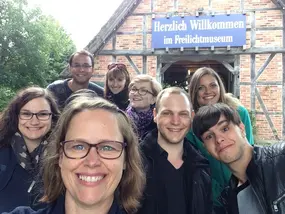
On the second day of our trip we visited the Freilichtmuseum Kiekeberg. This living history museum included an impressive collection of houses and animals and once inside, we explored rural buildings from different times and places in the North of Germany. As we learned from our guide, all these buildings were disassembled, moved from their original places and built up again on the area of the museum to preserve their heritage.
Next to different kinds of farmhouses, buildings like a pub with a distillery, a bakery, a bee house, and various barns were also open to our curious inspection. Additional to the regular tours, the museum also offers visitors the chance to bake their own bread in a project called "Vom Korn zum Brot", thus aiming to revive interest in traditional crafts that immigrants also brought with them to America. Besides the buildings, the museum also cares for a representative selection of livestock, such as pigs, piglets, sheep and bees, thus contributing to an international project to preserve old animal breeds.
As we got to known the typical buildings of Northern Germany and the routines of rural life, we realized that knowing how immigrants lived before their departure explained many of their actions after their arrival in the new world. For example, the houses that were built by immigrants in America and their exact purposes and functions can thus be better understood. Often they show characteristics of a certain region in Germany, thus referencing the origins of those who built them. Knowing how farmers lived and worked in their old home thus often allows us to better understand their choices in the new world. Upon our departure from this recreation of 'Old World North Germany', we found one surprising connection to Bamberg: the malt used for the museum's beer was delivered from one of our own local breweries in Bamberg! What a small world, indeed.
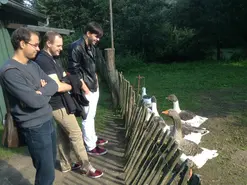
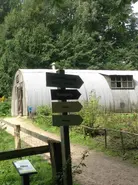
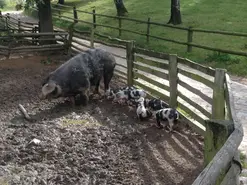
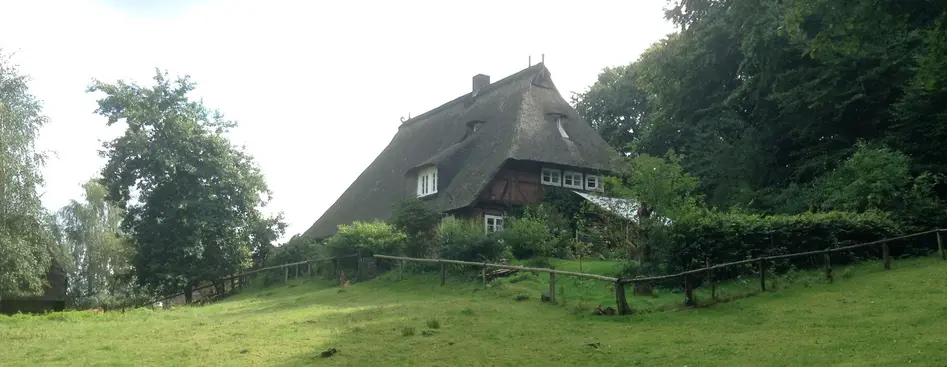
U like "Under the Radar!" (Alexander Konrad)
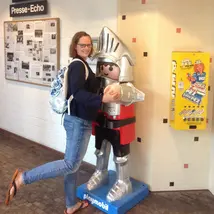
Apart from the scheduled activities of our trip, we also had plenty of time to go explore independently. Besides getting lost occasionally, Hamburg's metropolitan character gave us the experience of urine-reflecting walls, legendary sailor bars, and resulted in curios intercultural encounters and revelations such as that "This [the Reeperbahn] is Germany's effing Scotland!"
Although not each and every aspect of Hamburg and its famous night life could be explored, the best thing about our trip was how the group bonded and shared this experience of following in the footsteps of innumerable immigrants in the past. From the instructor's ardent passion for piglets rolling in the mud in the open-air-museum, to revelations about the metro system ("Witchcraft!"), to elaborate conversations about the casino's restrooms ("Very nice and for free!"), we had a lot of fun together. We learned a lot on our trip, not only about German immigration to the U.S., but also about each other as fellow students and future researchers and we'll be able to take on anyone in a quiz duel now!
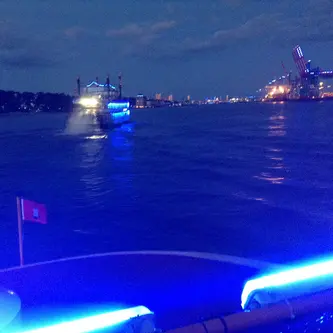
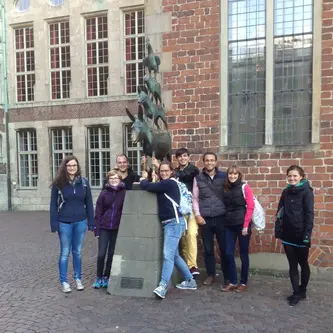
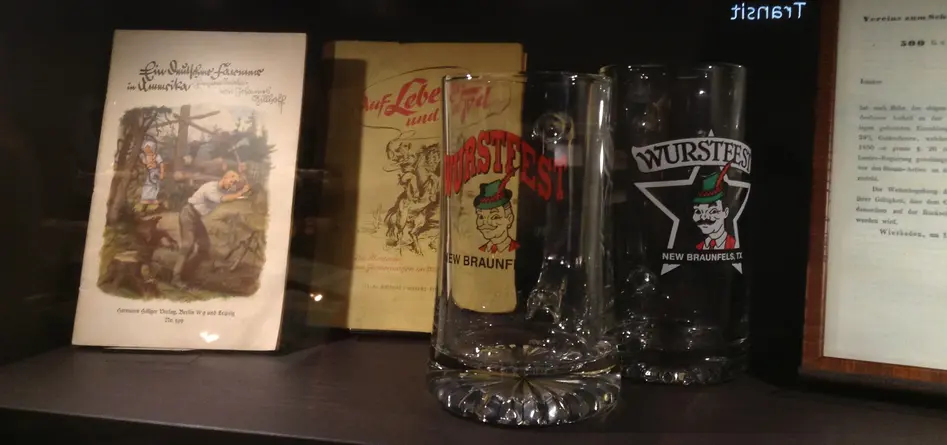
R like "Row, row, row the Boat!" (Alexander Wiesheier)
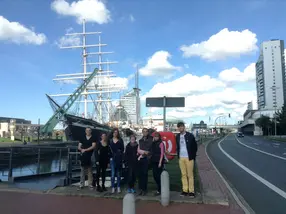
As the sun dawned on the third day of our Northern expedition, our journey took us to Bremerhaven, where we followed yet again in the footsteps of earlier migrants. After admiring the maritime scenery presented to us in the harbor, we found our way to the Deutsche Auswandererhaus. Touring the museum, we were given the identities of different migrants and followed their journey from their original homes across the Atlantic Ocean. Joining them on their way to Hamburg, their heart breaking farewell in Bremerhaven, their often arduous passage across the ocean on sailing ships or steamboats, their arrival to the selective processes in the immigration halls of Ellis Island, their first encounters with the citizens of the new world in New York and the continuation of their individual journeys either to success or failure – we closely connected with these strangers and witnessed their struggles at first hand. The fates of these people were as varied as the items on display in the museum: maps, letters, household objects and so much more; together they gave us an impression of the diversity of migrants' lives.
The museum also offered an extra exhibition about Immigration to Germany in the 1950s, which some of us visited, while others used the museum's database to search for their ancestors, and others decided to learn more about Northern wildlife in the nearby maritime zoo.
Eventually we reassembled and made our way to Bremen. After exploring this gem of Hanseatic beauty and laboriousness, and sampling the famous local ale at the Becks Brewery, we paid homage to our study of American culture and feasted on a mix of bread and meat, which the locals refer to as "Burger". Bellies full and heads cramped with impressions, it was time to retreat from the Western frontier back to Hamburg to get another peek at Hamburg's Festival of Lights, where local hotspots were illuminated and thus turned into magical places.
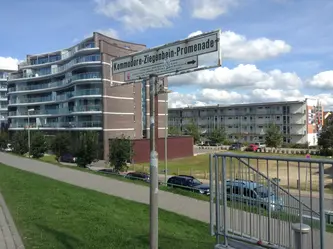
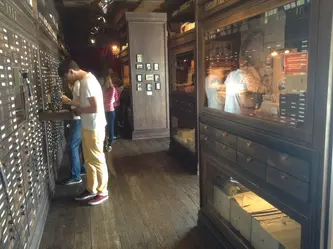
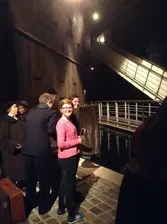
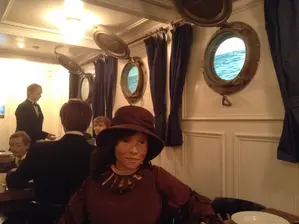
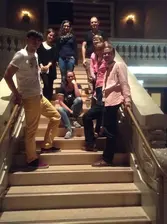
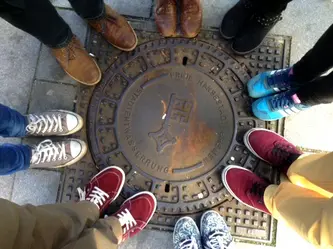
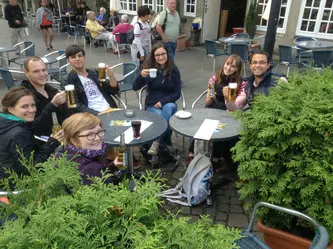
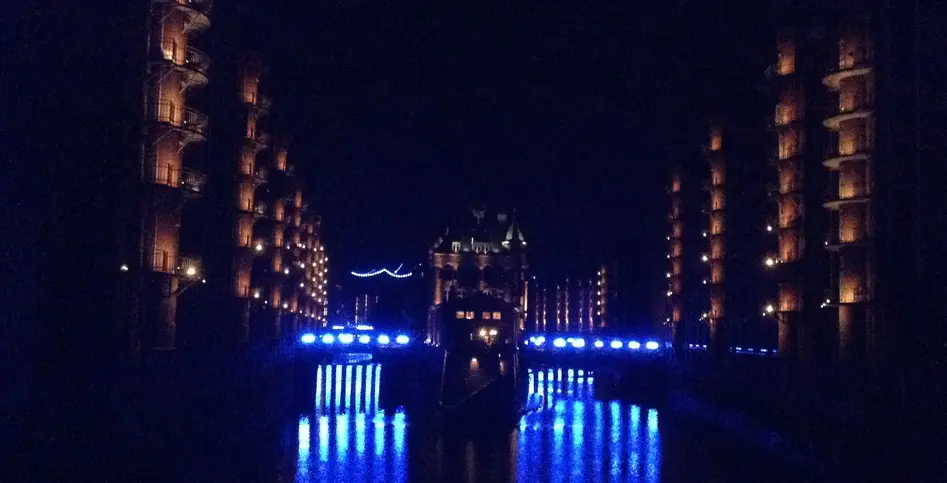
G like "Go West!" (Theresa Rößler)
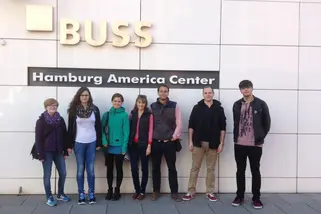
Alas, our last day in Hamburg had finally arrived! For the last point on our official agenda we strolled through the old Speicherstadt, where we were given a spontaneous tour through a yet to open Coffee-Museum and its beautiful location in the oldest basement in the historical warehouse district.
We then made it all the way to America, or at least its representation in Hamburg: the Amerikazentrum. Kindly welcomed by their staff, we learned about their Education USA Counseling Center, where they offer help to young people planning to go to the States. Mr. Strack, the head of the Amerikazentrum, then gave a short presentation on immigration and current developments in the foreign policy of the US, among others using cartoons about Hispanics migration. An outline on the work of the Amerikazentrum today and some possibilities of getting involved, e.g. in the form of an internship, as well as some Q&A and a traditional gift exchange concluded our visit.
Afterwards, some of us decided to explore the Schanzenviertel, while others paid a visit to Planten un Blomen – examples of civic engagement and the importance of public gardens. All too soon it was time to catch our train back to Bamberg, back to where many emigrants came from in the past and many Americans return to these days.
